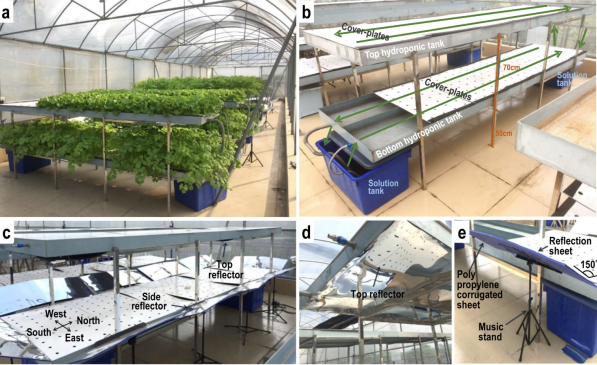

By 2050, the world’s population is predicted to reach 9.8 billion and food production through conventional agriculture has been straining the global environment. Moreover, urbanization has continued to reduce farmland capacity and farm labor, but to increase the food miles that demand transportation and food preservation. Urban farming is proposed by scientists to reduce food miles and to serve as a supplement to rural agriculture. As China is estimated to have around two million hectares of rooftop area by 2040, urban rooftop agriculture could be an attractive scheme.
From 2012, the group led by Dr. OW, David W. from South China Botanical Garden of Chinese Academy of Sciences started a research direction on urban rooftop farming. In 2016, they published a paper entitled “Rooftop production of leafy vegetables can be profitable and less contaminated than farm-grown vegetables”. Even though the analysis in that paper showed that it could be profitable to produce safe and nutritious leafy vegetables in Guangzhou, China using a single layer hydroponics set-up, the profit margin was not particularly attractive.
Multilayer production might be a way to increase yield and earnings, and from 2015, Dr. OW, David W., Dr. SU, Yun-Lin and their colleague tested the production of leafy vegetables using a two-layer hydroponic system. Since light quality in the bottom tank was less optimal, the addition of a bottom tank to the hydroponic setup doubled the growing space but actually did not correspondingly double vegetable yield. Supplemental electrical lighting could be used for the bottom-layer production, but sunlight is free and in most developing countries, electricity is limiting. Thus, to increase the necessary lighting, they opted for a cost effective route of using reflectors to direct ambient light to the bottom tank.
With the use of the reflector-assisted double-layer hydroponic systems, a special planting scheme that takes into consideration of consumer preference was deduced to be able to produce 6310 kg vegetables from the 150 m2 rooftop screen house, and depending on the cost of rent, this would translate to 84–162% of the 2018 Guangzhou average income. Moreover, if about 86 % of Guangzhou’s rooftop space is used, this planting scheme has the capacity to provide 0.3 kg of vegetables per day to satisfy the vegetable needs of the city’s 14 million inhabitants.
These findings may help incentivize investments in rooftop farming. Hopefully, this study as well as other studies could help further the development of this type of urban farming and could solve the problems caused by the expansion of population and urbanization.
The related study has been published in Urban Forestry & Urban Greening as a research article entitled “Increasing effectiveness of urban rooftop farming through reflector-assisted double-layer hydroponic production”. For further reading, please refer to https://doi.org/10.1016/j.ufug.2020.126766.

Figure. Roof screen house and reflector-assisted two-layer hydroponic system

